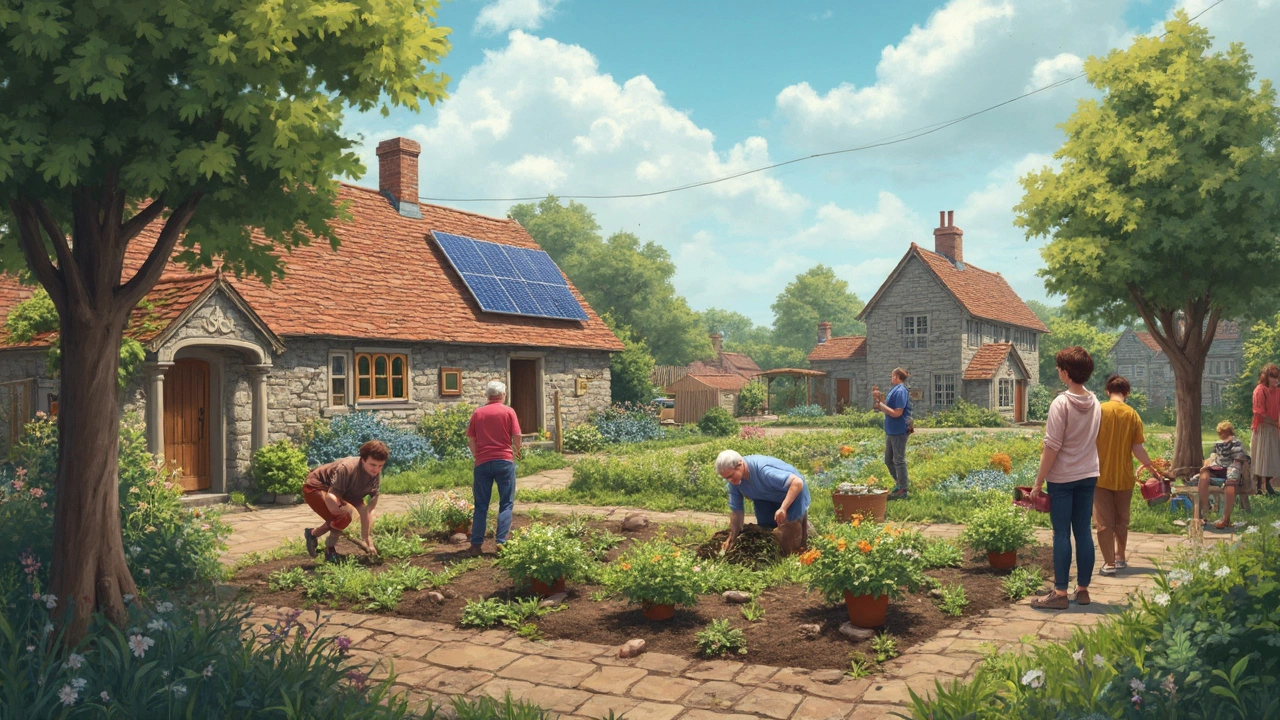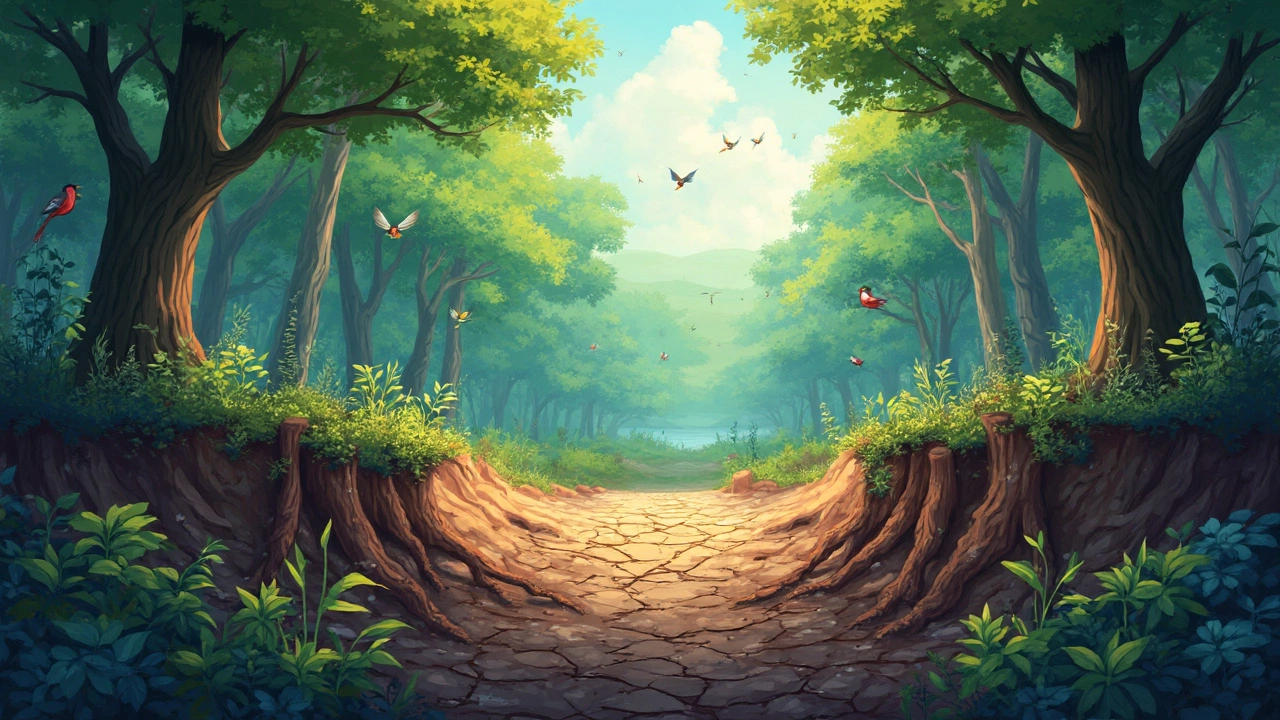We all want a future where our kids can thrive, right? But here's the thing: we're facing some big challenges that could mess up that happy ending for everyone on Earth. The most pressing issue looming over us right now is climate change, and it's not some distant threat; it's happening as we speak. Our planet is heating up, causing weird weather patterns, rising sea levels, and the kind of disruptions that don't just inconvenience us but jeopardize all life forms, from tiny plankton to massive mammals.
Now, let's not forget about biodiversity loss. It's a bit of a silent crisis. Think of it like those Jenga blocks we used to play with—remove enough pieces (or species, in this case), and the whole thing collapses. Human activities like deforestation and pollution are wiping out species at an alarming rate. It's not just about saving cute pandas (though, who doesn't love pandas?); it's about maintaining the balance crucial for life as we know it.
Then there's how we gobble up Earth's resources like there's no tomorrow. Seriously, we're living beyond our means. Our consumption habits not only drain these resources but also lead to harmful waste that further destroys habitats and contributes to environmental pollution. Seems grim, huh?
- Climate Change: A Ticking Clock
- Biodiversity Loss: The Silent Crisis
- Resource Overconsumption: Living Beyond Our Means
- Taking Action: What We Can Do
Climate Change: A Ticking Clock
You may have noticed that weather isn’t quite like it was when we were kids. Summers are hotter, winters are all over the place, and storms seem to be superpowered. This isn't just bad luck; it's climate change hitting hard. The average global temperature has risen a bit over 1°C since the late 19th century. That might not sound like much, but it’s enough to wreak havoc on ecosystems and weather patterns.
One major issue is the melting of polar ice caps. Ice is melting at an alarming rate, contributing to sea level rise. Just think about this: the Arctic is warming twice as fast as the rest of the planet. And as more ice melts, more sunlight gets absorbed by the water, speeding up the warming process. It's a nasty loop we’re stuck in.
Rising sea levels aren't just a stat though; they're a real headache for coastal areas. We're talking about increased flooding and losing land that millions call home. Imagine the chaos and displacement!
Then there's the impact on natural disasters. Ever notice how hurricanes and typhoons seem more intense? That's because warmer water acts like fuel for these storms, making them bigger and nastier. If you’re living in a storm-prone area, this is reality.
Weather anomalies, like unexpected droughts and intense wildfires, are tearing through areas that aren’t used to such extremes. They've made farming unpredictable and life for wildlife a game of survival. To make things even trickier, this connects with something called biodiversity loss—because when climates shift, species struggle to adapt or simply can’t survive.
So, what do we do? First off, realizing how human impact is part of the problem is key. Our choices shape a lot of these changes. Sure, there's global action, but even small steps from recycling to cutting down on fossil fuels help. More solar panels, fewer carbon emissions. We've got the tools; it’s about using them.
Biodiversity Loss: The Silent Crisis
Biodiversity loss might not get as much spotlight as climate change, but it's just as urgent. Imagine our planet as a massive web of interactions between species. Pulling out too many threads can make the whole structure collapse. This isn't just a worry for far-off rainforests; it's happening in your backyard too.
Here's the quick scoop: scientists say we're losing species at a rate that's 100 to 1,000 times faster than natural rates. That's not just a number—it's a wake-up call. Human activities like deforestation for agriculture, pollution, and urban sprawl are mainly to blame.
Let’s talk numbers. According to a report from the World Wildlife Fund, we've seen a 68% drop in wildlife populations over the last 50 years. Yikes, right? It's like going back to a nearly empty zoo. And honestly, it’s not just sad—it’s dangerous. Ecosystems can't function right without their full roster of residents.
Why should we care? Well, because losing biodiversity affects food security, clean water, and even the air we breathe. These little creatures, plants, and whatnot also help control pests and diseases. So yeah, they're pretty important.
What can we do to stop sliding down this slope? It starts with protecting natural habitats. And hey, even in urban areas, planting native species can make a difference. Supporting environmental groups and sustainable practices in our shopping habits doesn't hurt either. It's about making choices that give space for nature to bounce back.
It's easy to feel overwhelmed by numbers and facts, but taking small actions can really add up. Let's not wait until it's too late. Our planet's web needs every thread to stay strong.

Resource Overconsumption: Living Beyond Our Means
Alright, let's get real for a minute here. We humans love our stuff—fancy gadgets, fast fashion, abundant food options. But here's where it gets tricky: we're using up Earth's resources like there's an endless supply, which there's not. Every time we buy into this consumer culture, we're tapping into a finite bank. This means we're pulling from resources that take millions of years to form, like fossil fuels, and using them up in a flash.
Consider how much water it takes to produce a single pair of jeans. About 1,800 gallons! Multiply that by the billions of jeans made yearly, and you've got a serious drain on our water supplies. The food industry is another big player in this overconsumption game. Food waste is massive—almost a third of all food produced globally ends up trashed, while many go hungry. It's a crazy imbalance.
And the way we consume isn't just depleting resources. It leads to pollution and destruction. Look at plastic. It takes hundreds of years to break down, and we keep making more of it. This plastic ends up in oceans, harming wildlife and entering the food chain, which circles back around to us.
So, what's the game plan? How do we start making a difference with our everyday choices? Here’s what you can do:
- Trim down on single-use plastics. Grab a reusable water bottle or canvas bag instead.
- Think twice before buying new; try to repair or reuse what's already there.
- Shop smart with food. Need only what's necessary—leftovers are your friend!
- Support brands that push for sustainability in their production processes.
Change doesn't happen overnight, but every small step we take adds up. It's about living within our means and ensuring these resources stick around for the next generation. Who doesn't want their kids—like my Lachlan—to grow up in a world as rich and beautiful as the one we know today?
Taking Action: What We Can Do
Alright, so let's talk about some real stuff we can do to tackle these enormous issues like climate change and resource overconsumption. We might feel like small fish in a big ocean, but our everyday choices can add up to make a big splash. Here are some practical steps you can take:
- Reduce Energy Use: Switching off lights when you leave a room, unplugging gadgets not in use, and opting for energy-efficient appliances cut down your carbon footprint. Plus, it can save you money—bonus!
- Sustainable Transport: Walking, biking, carpooling, or using public transport over driving solo can significantly reduce emissions. If an electric vehicle is within budget, that's a game-changer for reducing environmental threats.
- Diet Decisions: Going meatless even once a week can save a ton of resources. Agriculture, especially cattle farming, is a major contributor to greenhouse gases.
- Waste Management: We produce a lot of waste. Recycling, composting, and simply buying less single-use plastic can mitigate pollution.
- Support Biodiversity: Plant native species in your garden, support local wildlife, and avoid products that contribute to biodiversity loss.
- Educate and Advocate: Stay informed about human impact on the environment and spread the word. Encourage businesses and policymakers to adopt sustainable practices.
If you're curious about some quick stats, consider that the average American family could shrink their carbon emissions by a whopping 22% just by improving their weekly household activities. That's a pretty compelling reason to rethink our habits!
Each small step might seem like a drop in the ocean, but collectively, they can pave the path to a healthier planet. So, let's roll up our sleeves and get cracking on saving this beautiful world for the generations to come!
